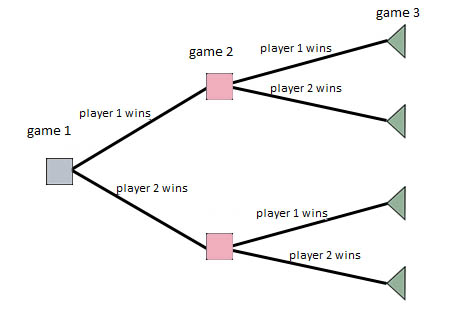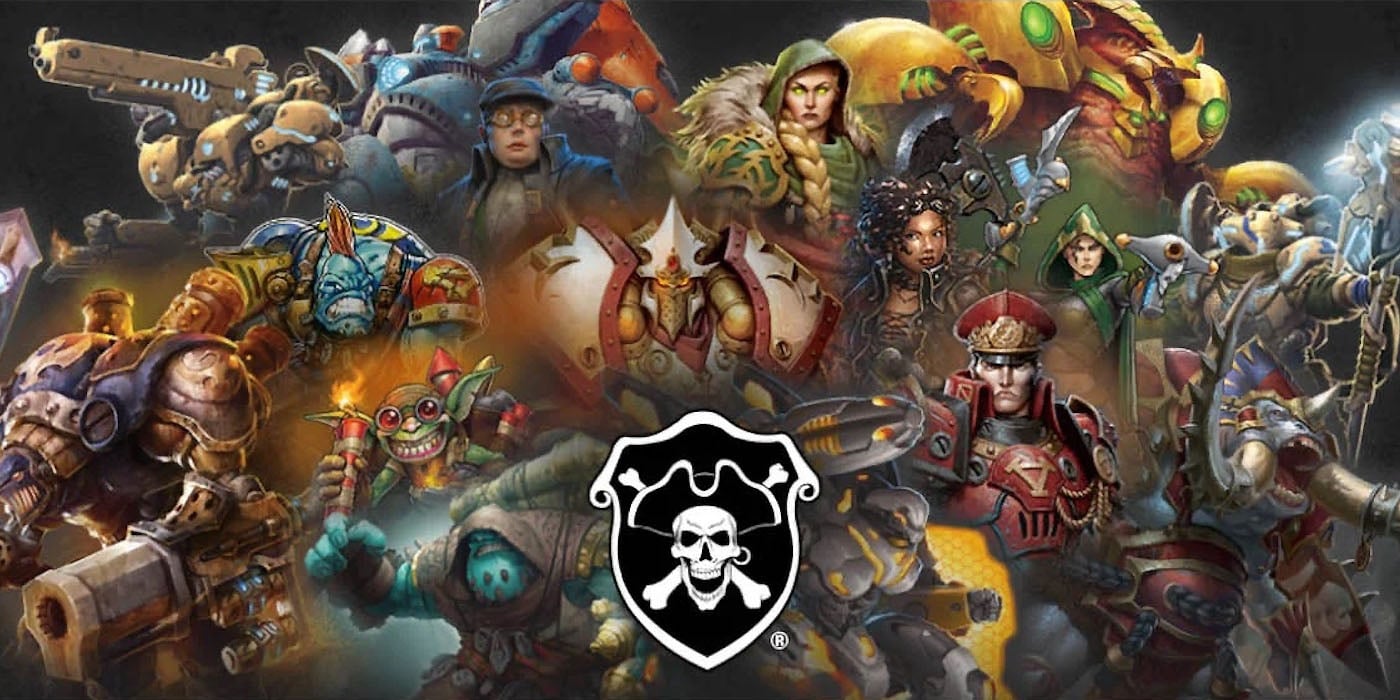Wargaming – On Campaigns – Part 2

A series on playing and designing that most elusive and entertaining of goals, the well balanced, fun and successfully completed campaign.
So you have a backstory for a campaign (see part 1 here), but how will you go about determining an outcome? The first step is to consider what type of campaign you are aiming to run. Is this for a whole club to participate in or is it to be the basis of weekly gaming for you and a mate. For the purpose of this article I will look at the latter (Don’t panic…multi-person campaign shall be addressed in another article).
There are two main types of 1 v 1 campaigns you can use. The first is where the outcome of the first game will affect what is played for the next game. This is what I like to refer to as the campaign tree and looks something like this:
With this type of campaign the story you are creating is determined by victory/ defeat, especially if you put some thought into what the next battle in the chain will be. For example if player 2 wins twice in a row perhaps game 3, as the final game, will be a last stand styled mission where player is the defender against horrific odds. This is quite an easy way to set up a campaign between you and friend as you can spend a few minutes drawing up the tree and putting in the different battles, yet the example above will last you three weeks (assuming you’re playing on a game a week basis).
There are two drawbacks to this approach though. The first is coming up with what type of mission should go where and for both players to agree on it. The second is that it is often limited to how many games there can be in the campaign. Using the tree above, you would have had to put down a max of 7 games which make chronological sense. Now 7 isn’t that hard as you could put one type of game down more than once, just switching round attacker and defender. Consider if you wanted 6 game campaign then you would need 31 individual games to fill in the tree. Now that’s a lot and seeing as 25 could possibly be wasted, that’s a lot of wasted effort. Now I don’t want that to put anyone off but should you choose to do a campaign tree keep the number of games relatively low.
The second type of 2 player campaign is a linear one. This is where you play a certain game regardless of outcome, perhaps with the previous battle determining who will be attacker and defender.
Now the main strength in this game is that it is really flexible. The line of battles shouldn’t be seen as a set path that must be followed as with the campaign tree but as a rough guideline. Should one game have a certain factor, like against Tyranids all the Genestealers units survive the game then you could postpone the next game and insert a search and destroy based game where all the stealer cells are wiped out. This type of campaign also gives you a bigger degree of control over the story being told as why one game, regardless of outcome, leads to the next game. This may seem like a lot of extra work compared to the campaign tree but trust me, it can be really fun.
This also has the advantage of being able to play with long pauses between. For the campaign tree you would need to play it over a consistent series of weeks or days so as to stay connected with the story being told. With the linear campaign you can play a game with a couple of months in between and every game will merely be a continuation of a story. To put this and the point in the paragraph above in context, I see my brother generally 3-4 times a year due to living in different countries. Last Christmas we played a game where my Orks launched an all-out attack on his Empire regiments home town. Then when we played again at Easter we decided to follow up with a game where the Ork shaman was ambushed by an Empire knight detachment; the story being that the shaman caused horrific amounts of damage in the Christmas game so needed to be taken out before he could cause more damage.
So now that you know, what’s stopping you and a friend from playing out the conclusion of that fantastic story you’ve both cooked up? Look for part 3 coming soon, and a special campaign treat from BoLS.








